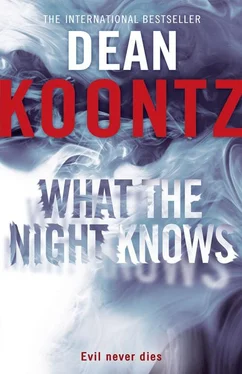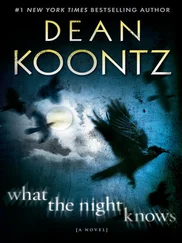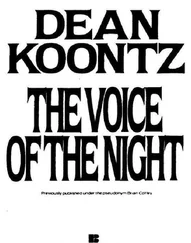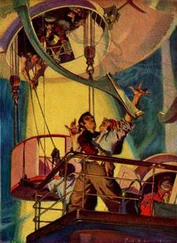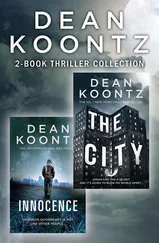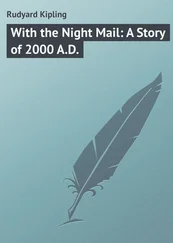Display shelves held an eclectic collection of things pleasing to Celine. Twenty ceramic mice, the largest no more than two inches tall. Seashells. Glass paperweights. A snow globe containing a quaint cottage.
Bells. Behind the mice, between two plush-toy bunnies in white bonnets and gingham dresses, on a green box in which they evidently had come, lay three miniature silver calla lilies all sprouting from one silver stem. The spathes were exquisitely shaped, but instead of a yellow spike, each enclosed a tiny silver clapper.
The stem, by which the bells could be rung, was dark with dried blood and with tarnish the blood encouraged. If the criminalists had noticed the bells, they would have bagged and taken them.
From a box of Kleenex on the desk, John plucked a tissue. He folded it into a pad and gripped the silver stem, not to preserve evidence – too late for that – but to avoid touching the blood.
On the lid of the green box under the calla lilies, in silver script, were the words Piper’s Gallery .
Shaken, the bells produced the crisp, cold ringing that he had heard three times since entering the house.
Unable to suppress a tremor in his hands, he placed the bells and the Kleenex in the box, tucked the box in a sport-coat pocket.
Back in the day, Alton Turner Blackwood had carried with him three silver bells, each the size of a thimble, clustered at the end of a handle. They were not shaped like flowers and were not as finely made as those on Celine’s shelf of small treasures.
Blackwood had been a psychopathic ritualist with an elaborate post-homicide ceremony that suggested both a strange belief system and obsessive-compulsive tendencies. When everyone in his target family was dead, he returned to the victims in the order the killings occurred and arranged them on their backs. With a drop of epoxy, he glued coins on the cadaver’s eyes: quarters that he’d painted black, always with the eagle facing up. In the mouth, on the tongue, he placed a brown disc that the crime lab identified as dried excrement.
Then the killer folded the corpse’s hands at the groin, around a chicken egg. To be sure the hands would not release the egg, he tied thumb to thumb and little finger to little finger with string.
Days prior to a slaughter, he prepared the eggs by drilling two tiny holes in each to drain the contents. Then he inserted a tightly rolled slip of paper through a hole into the well-dried, hollow shell. If the body was male, the paper carried the hand-printed word servus; if female, serva . They were the masculine and feminine forms of the Latin noun that meant “slave.”
After the cadavers had been accessorized to suit him, Blackwood had stood over each, ringing his triune bells.
Billy Lucas had not rearranged his four victims but had left them lying as they died. He didn’t conduct a ritual using black quarters, dried excrement, or hollow eggs. Evidently, however, he rang the tiny bells.
The delicate silver calla lilies featured no engraving.
On each of Blackwood’s bells had been the word RUIN.
John clearly remembered Billy with the almost wistful smile, standing on the farther side of the glass partition.
You mean – what was my motive ?
You haven’t said why .
The why is easy .
Then why ?
Ruin .
John switched off the lights in Celine’s room and left the door ajar as he had found it.
In the hallway, he stood listening to the house. No floorboards protested, no hinges creaked. No shadow moved.
He went to Billy’s room.
Chapter 8
The case detectives – Tanner and Sharp – had searched Billy’s room, leaving a bit less disorder than a burglar would have caused.
A few drawers in the highboy were half open. Tanner or Sharp had rummaged through the clothes therein, leaving them in disarray.
When they searched between the mattress and the box springs, they had not entirely disarranged the chenille spread.
On the nightstand stood a digital alarm clock. The numbers were not flashing as they had flashed on the kitchen clock.
John searched the desk, the closet, the nightstand, with no expectation of finding anything the other detectives had overlooked.
Previous to his killing spree, Billy Lucas’s interests had been, judging by the evidence, entirely wholesome. Sports magazines. Video games, but not particularly violent ones.
Bookshelves held a couple hundred paperbacks. John read each spine. Science fiction, fantasy, mainstream fiction: The boy’s interests were varied, but he possessed not a single true-crime book.
The computer on the desk was operative. Current department procedure in a case of this kind would have been to make a full backup of every document in the directory and take that, instead of the entire hard drive, for review later. With Billy’s confession and his commitment to the state hospital, no detective would have discovered – might ever discover – what the computer contained.
Before reviewing the contents in alphabetical order, John scanned the directory for intriguing key words. In less than half a minute, he found a document titled CALVINO1. Then CALVINO2.
The first contained photos downloaded from an Internet site devoted to serial killers and mass murderers. Here were Tom and Rachel Calvino, John’s mother and father. Also Marnie and Giselle, his sisters, at the ages of ten and twelve.
The photos accompanied the account of Alton Turner Blackwood’s fourth and final massacre of a family. The document did not contain a picture of the killer; apparently none was ever taken of the drifter during his life, and the postmortem shots in the medical examiner’s file were sequestered under a court order that protected young John’s privacy and that was never revoked.
For the same reason, John’s photo was not included. Besides, the site depicted only victims, and he was the sole survivor.
On the screen, his sisters were so lovely.
Many years had passed since he’d been able to look at photos of them. He had avenged them, for what that was worth. But if he had done something differently on that long-ago night, if he had not done a thoughtless thing that he had done, one of his sisters or perhaps both of them might still be alive.
Although he loved their faces, he could not bear the sight of them. He exited the document.
The atmosphere in this murder house grew more oppressive by the minute: the rain streaming down the windows, the humid air, a deathly stillness yet a persistent impression that someone listened, waited, and prepared for him in the nearby hallway or in another room.
He closed his eyes and summoned in memory a favorite painting, Pieter Bruegel’s Hunters in the Snow . This scene of a sixteenth-century Belgian town in a winter twilight, illuminated by a recent snowfall, was full of movement yet serene, somber yet enchanting. Contemplation of it always calmed John – until now.
Johnny .
At the state hospital, the boy had called him Johnny. Having read about Alton Blackwood, the kid knew John had slain the killer.
Here seemed to be proof that Billy patterned his killing spree after Blackwood’s murder of the Valdane family twenty years earlier.
When John retrieved the second document, CALVINO2, he discovered five photographs, the first of himself. It was part of a newspaper article about a citation for valor that he and his sometime partner, Lionel Timmins, had received more than two years earlier.
In the picture, he appeared uncomfortable; in fact, he had been embarrassed. Having survived, as a boy, when everyone else in his family had died, he could do nothing as long as he lived that would make him, in the balance, deserving of an award for valor.
Читать дальше
